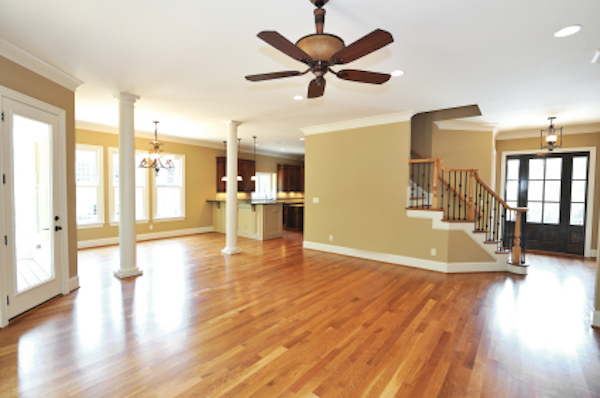5 Things To Consider Before Installing Ceiling Fans With Lights

Ready to install a ceiling fan with lights in your home? There are a number of things to consider before making your final decision.
Energy Savings and Efficiency
Efficiency is defined by the EPA as the amount of airflow a ceiling fan produces, divided by the amount of electricity it uses on its high speed. In most cases, using a properly sized ceiling fan will allow you to turn up your thermostat in the summer, and reduce the amount of electricity used by your air conditioner. And because ceiling fans use a fraction of the electrical costs associated with an air conditioning system, you’ll see the energy savings almost immediately.
When looking for an energy efficient ceiling fan light combination, look for one that is Energy Star certified. The lighting will be both efficient and long lasting, meaning you won’t have to make frequent bulb changes.
Airflow
Airflow is measured by Cubic Feet per Minute, or CFM. This is the volume of air a fan will move when it’s placed on high speed. The average ceiling fan will move about 4,000 CFM, while some of the most powerful fans on the market will reach more than 10,000 CFM.
Choose a ceiling fan with too low of a CFM and it won’t produce enough air movement to keep you comfortable.
This is one of the most important areas of comparison when selecting a fan. With air movement as your primary goal, pay attention to CFMs and choose a high enough level to meet your space needs.
Size Matters
The purpose of installing a ceiling fan is to cool the occupants of the room. Ceiling fans don’t cool the air, they simply circulate the air and create downdrafts, which work to keep people cool.
Choose the wrong size and it won’t get the job done.
Ceiling fans come in many different sizes, ranging from 12 inches to 96 inches in diameter. A ceiling fan is designed to produce airflow within the radius of the blades. You’ll find significant falloff just outside a two-foot radius of the fan blades. Choose the largest fan that will fit into your space without overwhelming it visually.
Quality
Yes, you can find ceiling fans at bargain prices. Just look at your local big box store and you’ll find many on the clearance counters. But there is no substitute for quality.
- A high-quality ceiling fan is almost always silent and will never wobble.
- A high-quality ceiling fan is more energy efficient and saves you money over the long haul.
- A high-quality ceiling fan has a better motor and will move more air.
Which is why you’re installing a ceiling fan in the first place.
Styles
This is where your imagination can run wild. Style refers to more than how a ceiling fan looks, it also refers to how it functions.
Ceiling fans can be flush mounted close to the ceiling, or extended to any length you desire.
Ceiling fan blades control both noise and efficiency. As a general rule, as the number of blades goes up, the fan tends to be quieter yet will circulate less air. Additional blades increase the drag on the motor and will slow it down.
Ceiling fan blades come in a variety of sizes, colors, and patterns. The look, style and comfort level is entirely up to you.
Ceiling fan lights provide you with unlimited options. Choose soft light or directional light. Choose a subtlety or have it transform your décor. Use it as the main lighting, or have it as an accent.
Choose control functions carefully. Always have a ceiling fan and lighting installed on separate circuits, so you can operate both depending on your needs. This is especially important in the bedrooms, to keep your room dark and cool all night long.
Ready to install a ceiling fan with lights in your home this year? Contact us today.





